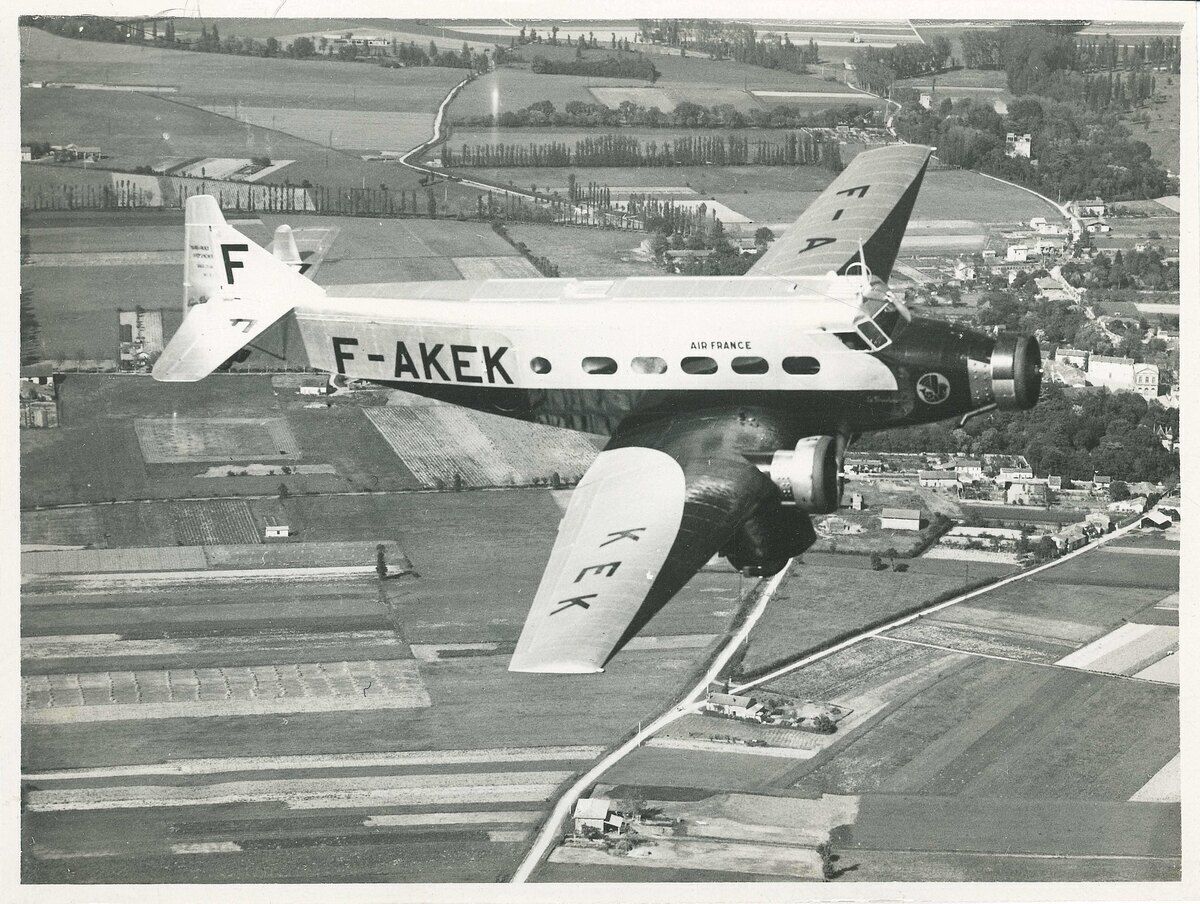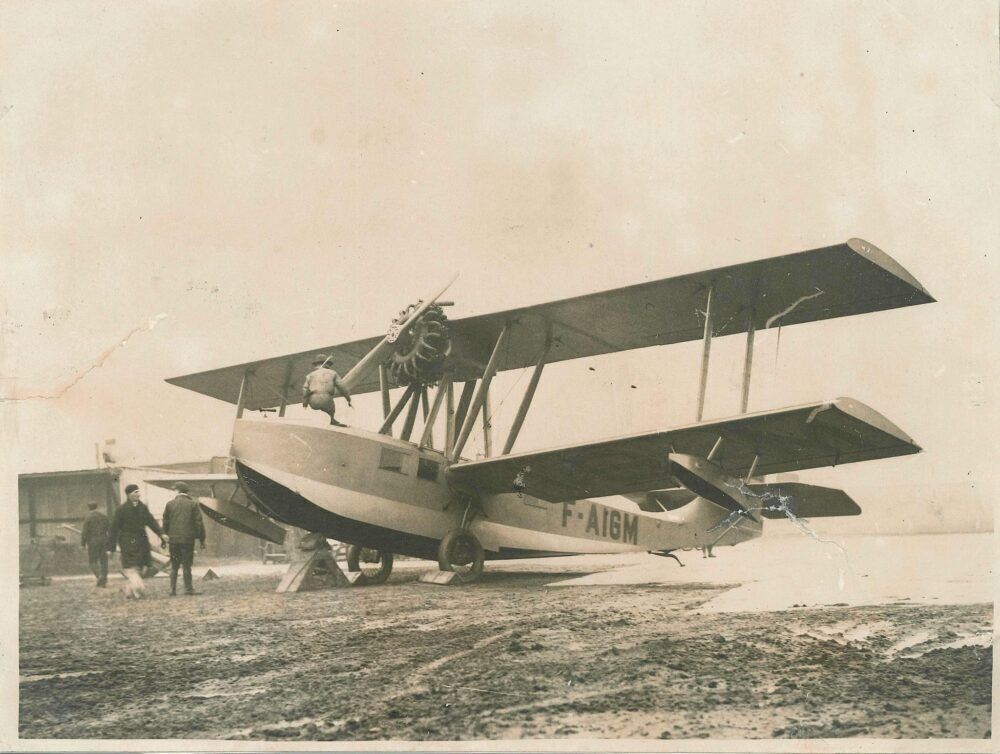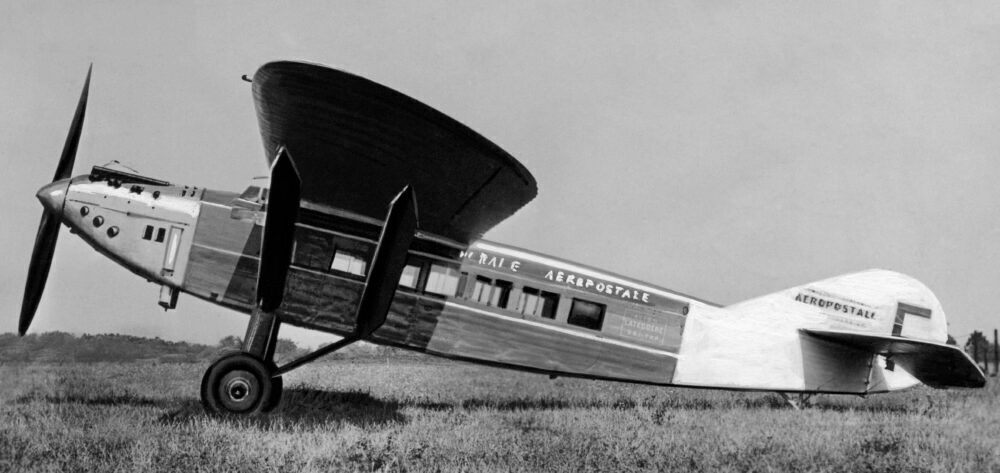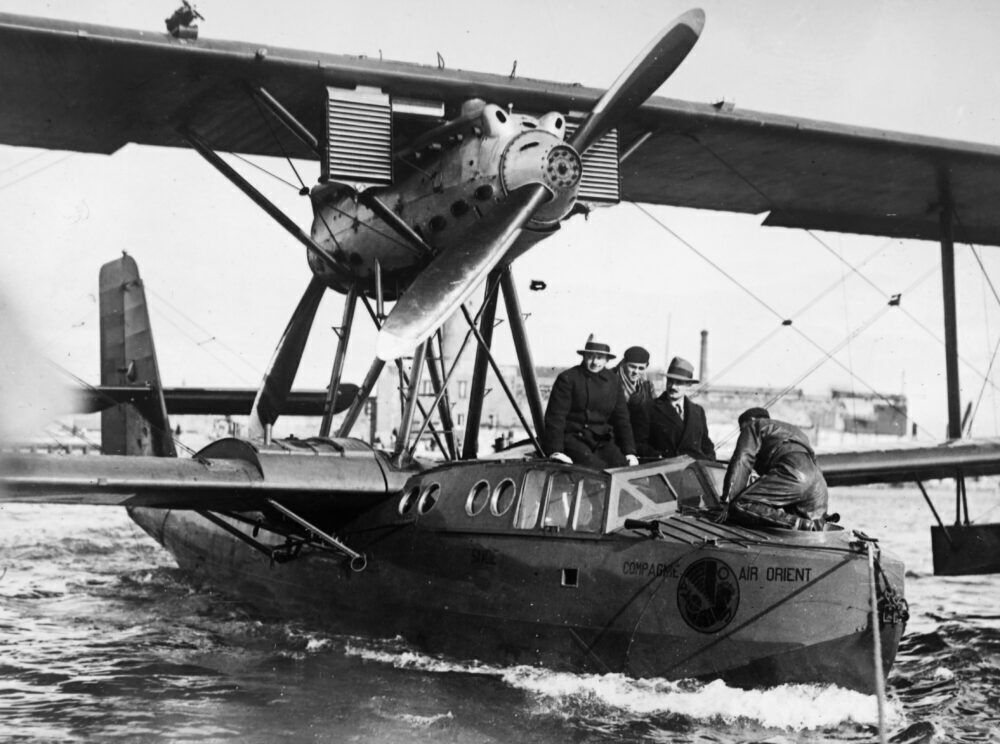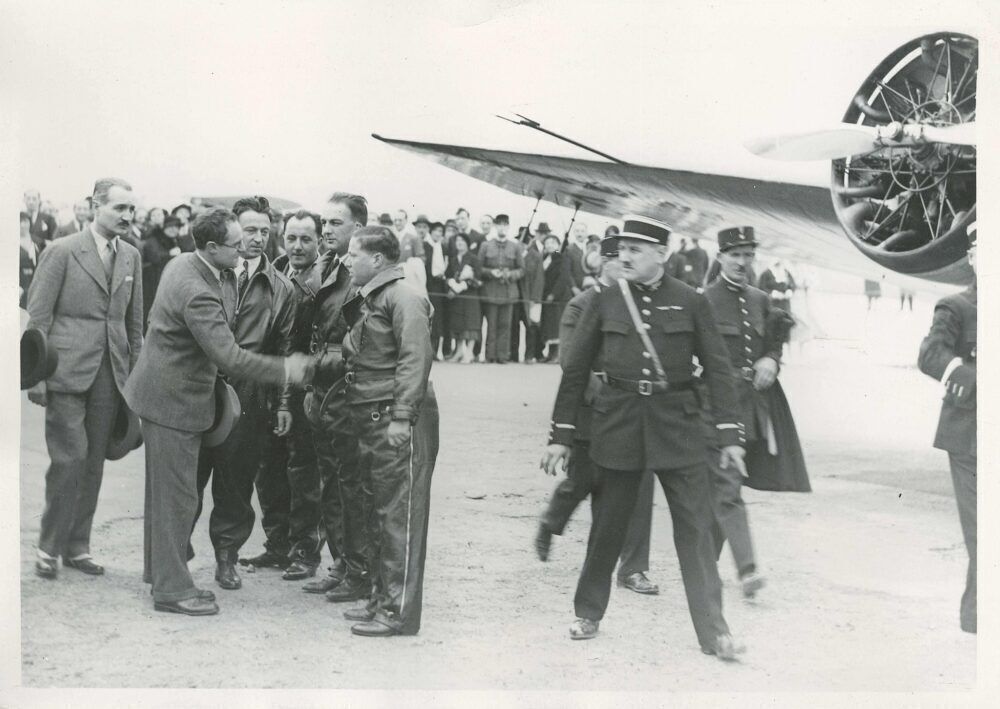Air France has been a globally recognized airline for more than eighty years, carrying the flag of its home country to all corners of the globe. But its formation in 1933 was born out of a merger involving some much older French airlines. Here’s how Air France was founded.
France’s first airline
The first airline company in France was formed in 1909 and was called the Compagnie Générale Transaérienne (CGT). Flying airships in France and Switzerland as well as floatplanes for flights from Paris to London, it was the first private company in the world to operate an airplane service.
In April 1911, the airline flew a Bleriot monoplane with a 50 horsepower Gnome engine from Issy-les-Moulineaux in Paris to Hendon in London. The flight took three hours and 56 minutes and was the first non-stop air service between the cities. CGT began regular flights between the capitals after that, mainly carrying mail and other small items.
Two years later, CGT began the first scheduled passenger services, operating an Astra CM Hydro-avion between Cannes and Nice. It could only carry two passengers on board, but proved to be a success, with the company adding Monte Carlo to the network later on. However, the outbreak of World War I proved to bring new challenges to this pioneering airline.
Stay informed: Sign up for our daily and weekly aviation news digests.
Competition
After the war ended, there was a glut of aircraft and pilots available for work. Aviation really started to blossom, and competition increased. CGT found itself being rivaled on its flagship London – Paris route by several other air carriers, in particular the Compagnie des Messageries Aériennes (CMA). In 1921, CMA absorbed CGT so that it could add mail to its air services.
But the mergers were not done yet, not by a long shot. 1919 also saw the formation of Grands Express Aériens, another Parisian airline. It flew Farman F-60 Goliath aircraft, a converted bomber with a luxury cabin. It primarily operated to London’s Croydon Aerodrome, as well as to Lausanne and Geneva. In 1923, it too merged with CMA to form Air Union.
Elsewhere in France, other airlines were springing up too. The French colonies in Africa and South America were ripe for connection, and Compagnie générale d'entreprises aéronautiques (CGEA) was set up to do just that. Serving Barcelona from Toulouse from 1918, the airline expanded its services to Casablanca and then to Dakar.
1927 saw 93% of the company sold to a French businessman in Brazil - Marcel Bouilloux-Lafont - who renamed it the Compagnie générale aéropostale, better known by the shorter name Aéropostale. It began flying to Rio de Janeiro, Natal, Paraguay and eventually to Santiago. Its services were primarily moving post, but people often traveled along too.
To the southwest of Paris, in the small town of Toussus-le-Noble, the Société Générale des Transports Aériens (SGTA) was founded in 1919. It too flew to the Croydon Aerodrome in the UK, as well as to Brussels, Hamburg, Copenhagen, Berlin and even as far as Scandinavia and Russia.
Also launched after World War I was Compagnie franco-roumaine de navigation aérienne, a Franco-Romanian airline using French built Potez aircraft. It was the first transcontinental airline in the world, transporting passengers, mail and cargo from Paris to Bucharest in 1920. It also undertook the first passenger international night flight in 1923, between Belgrade and Bucharest.
The final piece in the Air France puzzle was Air Orient. This, in itself, was an airline created by mergers. Air Asie and Air Union Lignes d’Orient merged to form Air Orient in 1929, flying to the Middle East and Far East French colonial outposts. But the biggest merger of all was yet to come.
Air France is born
The early 1930s saw a financial crisis that inevitably had an impact on aviation. France’s Minister of Aviation, Pierre Cot, spearheaded a reformation of the French air transport industry, which ultimately kickstarted the formation of Air France.
On October 7th, 1933, five airlines joined together to form what we now know as Air France. Air Orient, Air Union, Compagnie Générale Aéropostale, Compagnie Internationale de Navigation Aérienne (CIDNA), and Société Générale de Transport Aérien (SGTA) merged together, and Air France was born.
Between the five airlines, they had already built an impressive level of networks not just around Europe, but also to the overseas French colonies and other parts of the world. But they also had a large and very mixed fleet, consisting of 259 aircraft of 31 different types.
Air France moved into the offices of Air Orient at rue Marbeuf and adopted the winged seahorse logo of the same airline. Its executives worked hard to streamline the network and simplify the fleet, which was done using just French aircraft. By 1938, Air France had 100 aircraft and the world’s third-largest network. The rest, as they say, is history.

